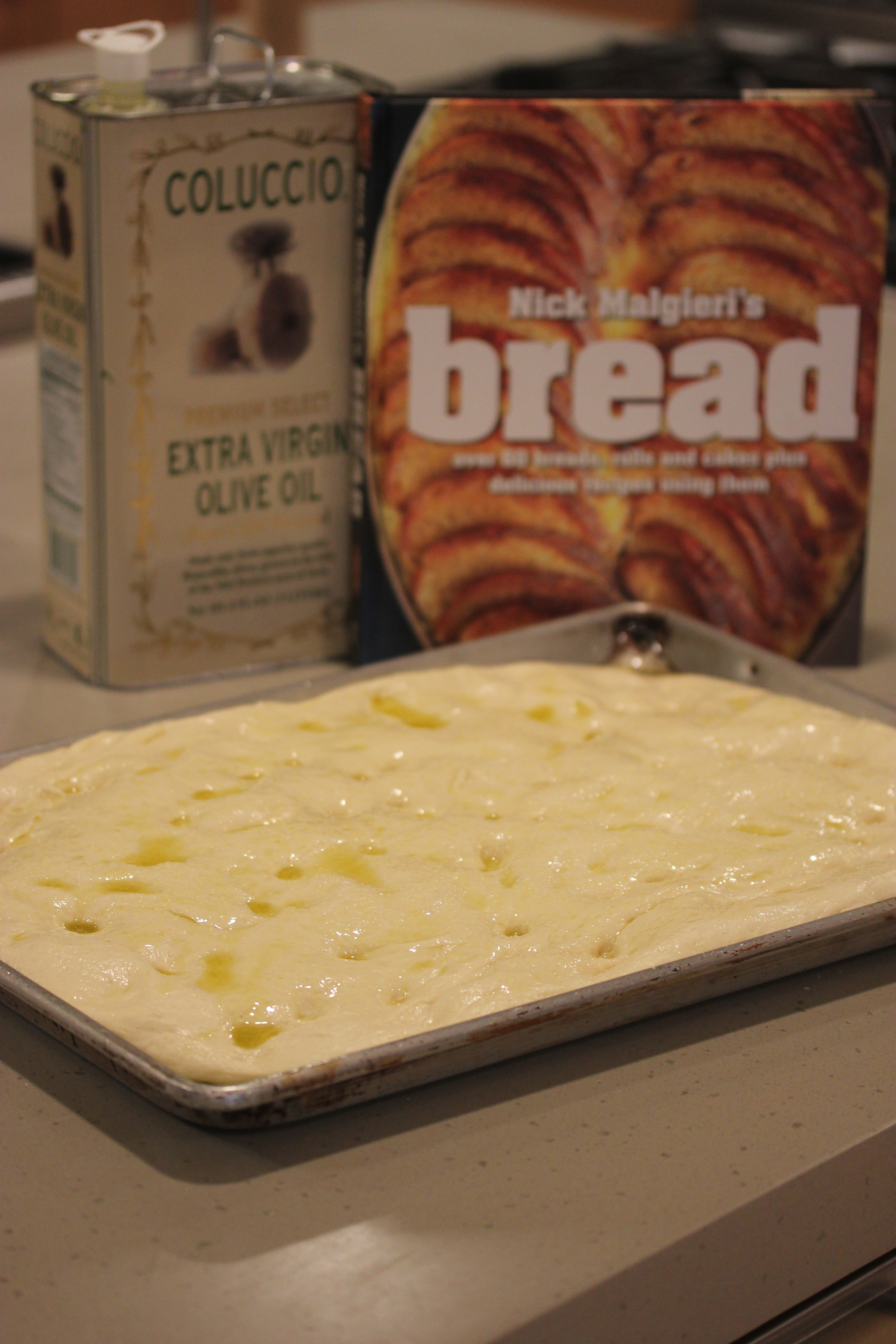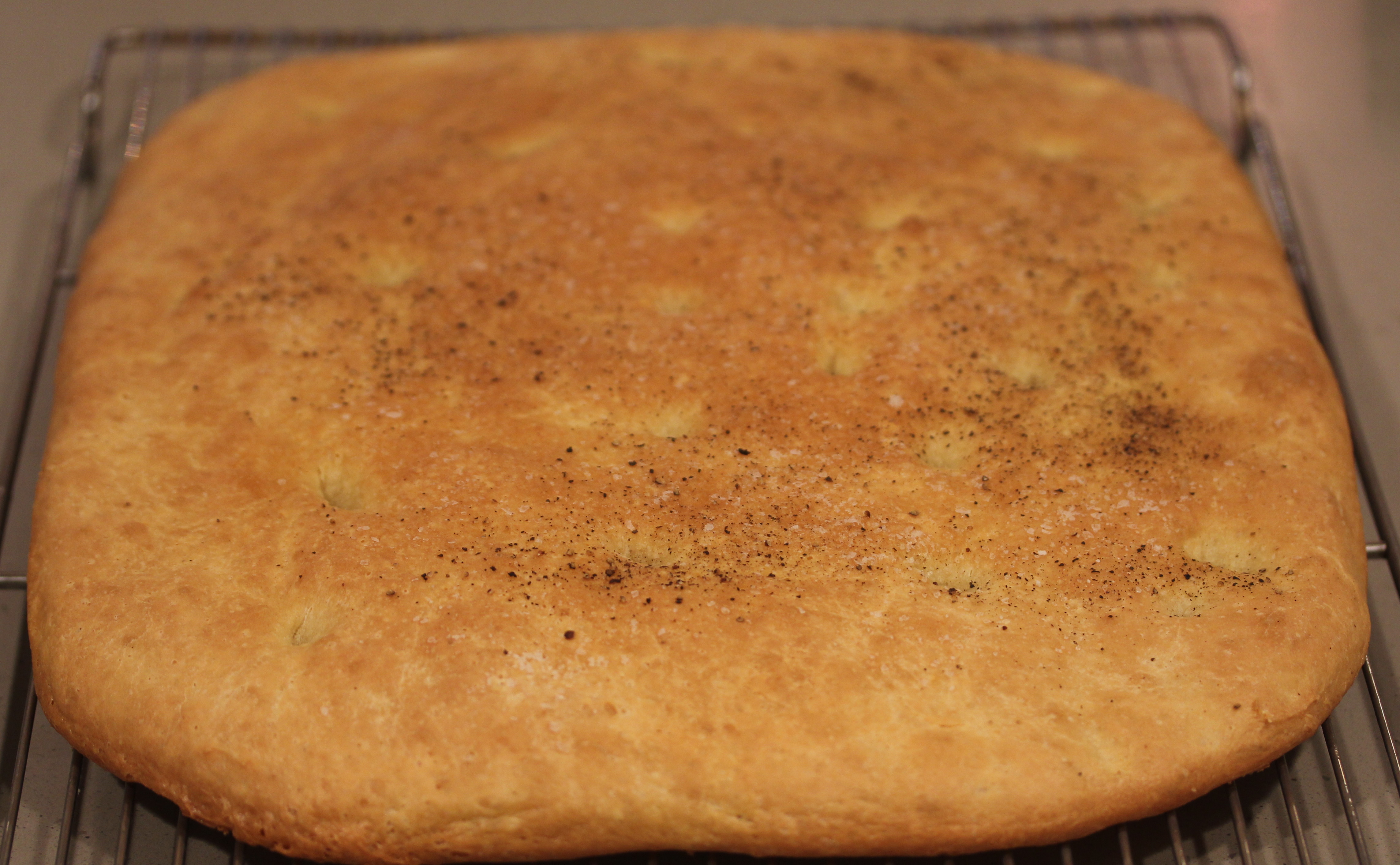Famed baker and teacher Nick Malgieri has new book, Bread, with a clever twist. Each chapter begins with a basic recipe followed by several variations or options. So the chapter on pan-baked breads begins with a basic dough, then offers alternatives such as cinnamon raising swirl bread, cheddar bread, whole wheat sandwich bread, seed bread, and French sandwich bread. Ah, that sandwich bread is put to multiple uses with recipes for a 6-layer Italian Tramezzini that will exercise your jaw, a tomato sandwich Nick remembers his father loved, and a ham sandwich with green tomato chutney.
In other words, Bread is stuff with great recipes reflecting Nick’s experience and imagination. Those chapters in Bread include:
- One-Step Breads
- Slow-Rise Breads
- Pan-Baked Breads
- Roll and Individual Breads
- Yeast-Based Two-Step Breads
- Sourdough Breads
- Whole Grain Breads
- Flatbreads and Crisp Breads
- Filled Breads
- Enriched and Sweetened Breads
- Coffeecakes and Buns
- Desserts
That Dessert Chapter includes Coach House Bread and Butter Pudding and Lemon Meringue Bread Pudding. The photographs of those treats, and all the others in the book, are by Romulo Yanes and will certainly inspire you.
Suzen’s first bread out of Bread is Nick’s focaccia. For her cooking classes at Cooking by the Book, Suzen often prepares focaccia for the appetizer. Fresh and warm, focaccia is the perfect greeting.
For his focaccia, Nick offers several options. Some for add-ins to the dough and some for making that topping much more than just olive oil and salt.
Consider these quick additions to the dough while in the mixer:
- 4 tablespoons finely chopped fresh rosemary leaves or coarsely chopped fresh sage leaves
- ¾ cup pitted olives, black or green or mixed, coarsely chopped
- ¾ cup sun-dried tomatoes chopped, plus 1 teaspoon dried oregano
And for the topping, consider:
- ½ cup finely grated Parmigiano-Reggiano or Pecorino Romano; omit the slat with the Romano, ½ cup finely shredded fresh sage leaves or ¼ cup fine chopped rosemary leaves; sprinkle them on the risen focaccia before dimply the dough so they’ll stick inside the impression made by your fingertips.
- 1 ½ cups well drained chopped canned plum tomatoes or ripe fresh tomatoes that have been peeled, seeded, and chopped. Spring with ¼ cup Pecorino Romano and 1 teaspoon dried oregano
- Drain a 12-ounce jar of roasted red pepper [not the kind packed with vinegar and sugar] and cut them into ¼ inch strips. Mix them with 3 peeled and thinly sliced cloves of garlic and 4 tablespoons olive oil. Let them marinate while the focaccia is rising in the pan. Distribute the whole mixture over the risen focaccia before dimpling it. Sprinkle with salt but no added oil. Sprinkle with dried oregano too, if you wish.
Basic Focaccia Dough
Yield: one 11” X 17” dough
Ingredients:
- 2 cups room-temperature tap water, about 75°F
- 2 ¼ teaspoons fine granulated active dry or instant yeast
- 8 tablespoons olive oil
- 5 cups bread flour [spoon into a dry-measure cup and level off]
- 2 teaspoons salt
- 3 tablespoons olive oil, for the topping
- 2 teaspoons kosher salt, for the topping
Preparation:
Whisk the water and yeast together in the bowl of an electric mixer. Wait 30 seconds, whisk again, and whisk in half the oil.
Use a large rubber spatula to stir in the flour about one quarter at a time. Place the bowl on the mixer with dough hook and mix on the lowest speed for 2 minutes — the dough will be soft. Stop the mixer and let the dough rest for 10 minutes.
Start the mixer again on medium speed and sprinkle in the salt. Mix until the dough is smoother, about 2 more minutes. Leave the dough in the mixer bowl and cover it with oiled or sprayed plastic wrap. Let the dough ferment until it doubles in bulk, 45 minutes to 1 hour.
Coat the pan — and 11” x 17” inch jellyroll pan or half sheet pan — with the remaining 4 tablespoons olive oil, remembering to cat the sides, too. Use a plastic scraper to remove the dough from the bowl, letting it fall onto the pan without folding it over on itself. Oil your hands and, pressing and stretching with your fingertips spread apart from each other, dimple and ease the dough to fill the pan. Try not to pierce the dough all the way through, but at this stage any holes should close while the dough is proofing.
Cover the dough with oiled or sprayed plastic wrap and let it proof until it doubles in bulk, about 30 to 45 minutes.
When the dough is almost proofed, set a rack in the lowest level of the oven and preheat to 425°F.
Uncover the dough. If most of the impressions you made earlier have closed up, used oiled fingertips to dimple it again, without pressing through to the bottom, at unevenly spaced 1-inch intervals. For topping, drizzle on the oil and sprinkle with the salt.
Bake the focaccia until well risen and well colored, 30 to 40 minutes. After about 20 minutes, use a metal spatula to life a corner of the focaccia and check to see whether the bottom is getting too dark. If so, slide another pan of the same size under the baking pan to insulate the bottom and turn the oven down to 375°F. Once baked, slide the focaccia to a rack to cool. Use a sharp serrated knife or pizza wheel to cut the focaccia into 3-inch squares and serve warm or at room temperature.


